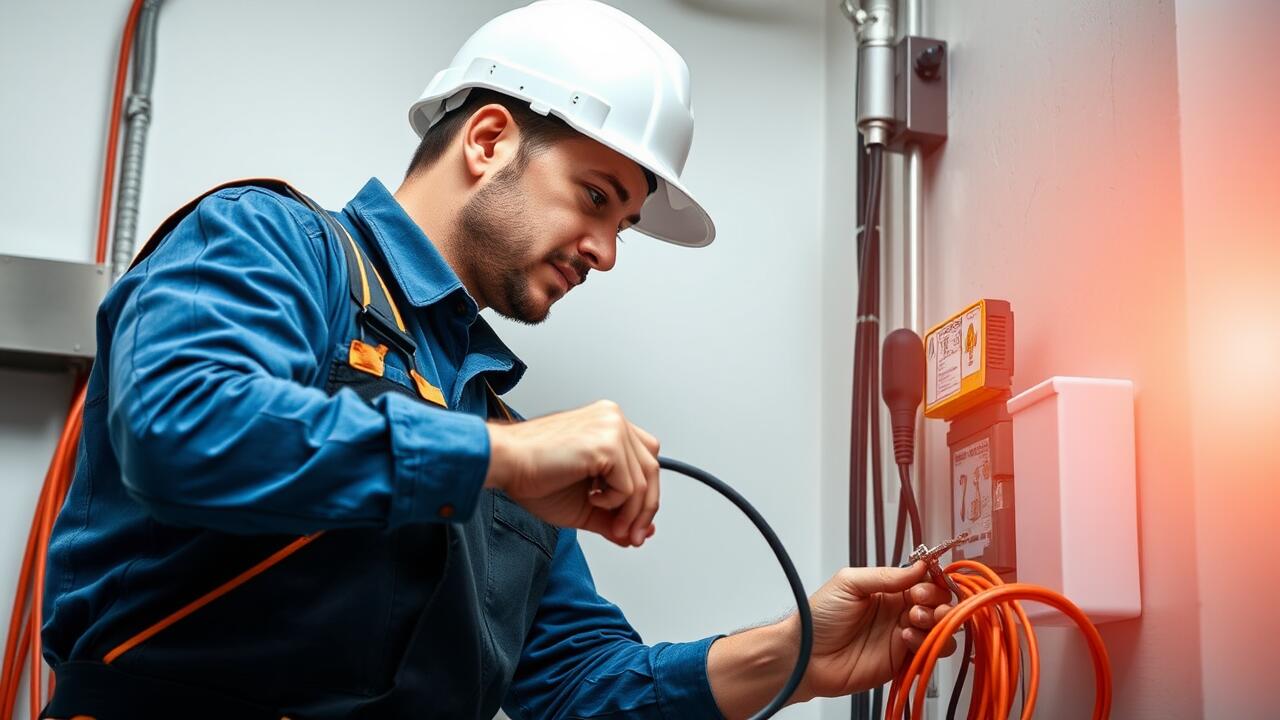
Choosing the Right Circuit Breaker
Selecting the appropriate circuit breaker is essential for ensuring safety and efficiency in your electrical system. Begin by considering the amperage rating, which should match the requirements of the circuit it will protect. This rating can vary based on the appliances and devices used. Furthermore, it's important to evaluate the type of circuit breaker needed, such as a standard breaker for general use or a ground fault circuit interrupter (GFCI) for wet areas. Consulting with a professional, like a Bellaire West, Houston Electrician, can provide clarity on these specifications.
Additionally, homeowners should take into account the overall load capacity of their electrical system. This involves calculating the total wattage of all appliances to ensure that the breaker can handle any surges. It is also wise to consider future electrical needs. If you plan to add more appliances or devices, select a breaker that can accommodate potential upgrades. A Bellaire West, Houston Electrician can assist you with assessments and recommendations tailored to your home.
Factors to Consider
When selecting a circuit breaker, it is essential to assess the electrical load requirements of your home or business. Each circuit breaker is designed to handle a specific amount of amperage, which is critical for ensuring safety and efficiency. An insufficient breaker may lead to frequent tripping, while an oversized one can pose risks of overheating and potential fire hazards. Consulting a professional, such as a Bellaire West, Houston electrician, can help determine the appropriate size for your specific electrical system.
In addition to amperage, the type of circuit breaker is another factor to consider. There are different types available, including standard, GFCI (Ground Fault Circuit Interrupter), and AFCI (Arc Fault Circuit Interrupter) breakers. Each serves a unique purpose and protects against various electrical hazards. Understanding the differences can be crucial for safeguarding your home and ensuring compliance with local electrical codes. A qualified electrician can provide insight into which type is best suited for your needs.
Signs of a Faulty Circuit Breaker
Recognizing the signs of a faulty circuit breaker is crucial for maintaining electrical safety in your home. One prominent symptom is frequent tripping of the breaker, which can indicate an overloaded circuit or internal malfunction. Flickering or dimming lights, especially when using multiple devices, may signal that the breaker is struggling to distribute power effectively. If you experience these issues, it’s a good idea to consult a professional like an Alief, Houston Electrician to assess the situation.
Another warning sign of a malfunctioning circuit breaker is the presence of unusual odors or sounds. A burning smell could indicate overheating, which poses a serious fire hazard. Likewise, a buzzing sound might suggest that the breaker is losing its effectiveness. These concerns should not be taken lightly as they may lead to further electrical issues. Having an experienced Alief, Houston Electrician inspect your breaker can help identify the underlying problem and ensure your electrical system remains safe and reliable.
Symptoms You Shouldn't Ignore
A circuit breaker that frequently trips can indicate underlying electrical issues. If you notice your breaker shutting off multiple times a day, it may not be functioning correctly. This constant interruption could be caused by overloads or short circuits. In such cases, it’s advisable to consult a professional. Ignoring this symptom might lead to more serious electrical problems or even fire hazards.
Another symptom to watch for is a breaker that feels warm to the touch. Breakers generally should not generate heat during normal operation. If you encounter this, it may signify a problem with the breaker itself or an overloaded circuit. Residents of Alief should reach out to a Houston electrician to assess the situation. Electrical issues can escalate quickly, and addressing them promptly can help maintain safety in your home.
How to Reset a Circuit Breaker
Resetting a circuit breaker is a straightforward process that can be done in just a few steps. Begin by locating your breaker panel, which is typically found in a basement, garage, or utility room. Open the panel door and identify the tripped breaker; it will be in the "off" position or may appear to be in between the on and off positions. To reset it, firmly push the breaker switch all the way to the off position first, then push it back to the on position. This action should restore power to the affected circuit.
If the breaker trips again shortly after resetting, this may indicate an underlying electrical issue. It’s advisable to check for any overloaded circuits or short circuits causing the problem. For a thorough inspection and professional assistance, consider contacting an experienced Alief, Houston Electrician. Their expertise will help diagnose and resolve any persistent electrical issues safely and effectively.
Step-by-Step Guide
To reset a circuit breaker, first identify the location of your electrical panel. This is usually found in a utility room, basement, or garage. Once you locate the panel, open the door and look for the circuit breaker that is in the “off” position or showing a red indicator. Before proceeding, ensure that there are no signs of damage such as burnt or frayed wires. If everything appears safe, you can move on to the next step.
Next, firmly push the circuit breaker switch to the “off” position and then back to the “on” position. This action will reset the breaker and restore power to the affected circuit. If the breaker immediately trips again, it may indicate an underlying electrical issue. In such cases, it’s wise to contact a professional, like a Bellaire West, Houston Electrician, to inspect your system for potential safety hazards or wiring problems.
FAQS
What is the primary function of a circuit breaker?
The primary function of a circuit breaker is to protect electrical circuits from overloads and short circuits by automatically shutting off the electrical flow when a fault is detected.
How do I choose the right circuit breaker for my home?
To choose the right circuit breaker, consider factors such as the amperage rating, type of circuit (e.g., single-pole or double-pole), and the specific electrical load requirements of your appliances and devices.
What are common signs that a circuit breaker is faulty?
Common signs of a faulty circuit breaker include frequent tripping, unusual noises coming from the breaker panel, signs of burning or discoloration, and a breaker that feels warm to the touch.
Can I reset a circuit breaker by myself?
Yes, you can reset a circuit breaker by yourself. Simply locate the breaker in your panel, flip it fully to the "off" position, and then switch it back to the "on" position. Make sure to address any underlying issues before resetting.
When should I call a professional electrician regarding my circuit breaker?
You should call a professional electrician if you experience frequent tripping, notice burning odors, see smoke, or if a breaker does not reset properly. These can be indicators of more serious electrical issues that require expert attention.




